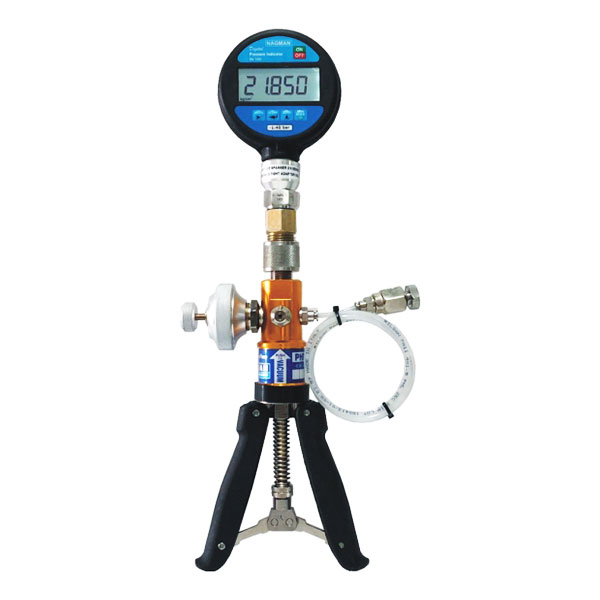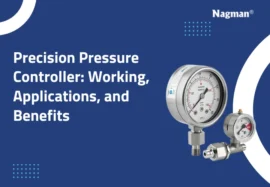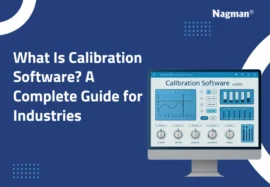Buyers frequently demand the maximum precise type of equipment offered, however, the most precise device may not always be the best choice given specific purposes. If you’re looking to buy a new pressure controller for your manufacturing line, there are a few things to think about before deciding which model is best for your needs.
While choosing pressure calibrators, Nagman recommends that you keep in mind criteria such as the precision and pressure requirements, as well as the product’s environment or medium, estimated uptime, financial challenges, and capacity to do work in the long term for your business.
Accuracy and pressure range
To begin, determine what you want to achieve in terms of pressure range and precision. More precision is usually associated with a higher cost. Concentrate on locating a method that would not only satisfy overall pressure requirements but also current financial constraints.
Pressure Monitoring Instruments for Hydraulic-Handheld Digital Pressure Calibrators
Since there are so many distinct components with varying pressure levels, modular devices like the MPCE IN100, MPC-P, and MPC-P Plus Pressure Calibrators provide more versatility. This gives you the freedom to tackle a wide spectrum of uses and loads. Throughout the remainder of the gamut, there are inconsistencies as low as 0.01 per cent. By acquiring an additional pressure module, you can expand your range or enhance the accuracy in the long term.
Differential Pressure Manometers are most commonly found in calibration laboratories, but devices could also be found in automation industrial applications, test mediums or environments and evaluation. In many circumstances, the buyer may be performing the same test over and over again. In these situations, throughput, reliability, and repeatability remain critical.
The capability to rack-install the device and manage that from a desktop or data processing station may be critical in industrial environments. In these cases, equipment that can be incorporated into an operational system with multiple sensors functioning at almost the same time is required. A deadweight tester, for example, is intrinsically a mechanical device; thus, this is not conceivable.
Media or Environment Contamination
After you’ve determined your pressure and consistency requirements, the next step is to look at the medium or environment in which the device will be used. If the gadget is solely utilized for new items or customer returns in a production setting, we must be cautious about its functionality.
Damage or contamination of the pressure sensor is a likely failure with returned pressure devices and Reliability, Maintainability, and Safety compliance for customers.
Although the pressure regulator is mounted in a system, it utilizes a specific type of pressure environment or medium; this should be taken into account when selecting the medium for calibration. Throughout this calibration process, do not use any media that can prove problematic whenever the benchmark is reinstalled in the cycle. In some cases, the process medium can be detrimental to your calibration gear and vice versa.
When the instrument is being used to monitor the level of oxygen gas, it is among the most intense operating circumstances. Should any residue get into a high-pressure oxygen network while the instrument is being calibrated, it could be especially unsafe and result in an accident.
A whole other aspect of the process of manufacturing which you should consider is what is required in respect of replacements and similar components to maintain uptime. The pressure monitoring components, along with much of the pressure regulator pneumatic system, are housed in consumer-replaceable pressure units due to the modular design of the device. Both in terms of recalibration and unanticipated maintenance, the system is easier to handle.
Spare Modules, Downtime and Uptime
Replacement, including all removable client components, is recommended for applications that demand almost 100% uptime. When a pressure regulator unit breaks, for example, the customer may easily depressurize the device, switch the control module whereas the console remains in the rack, and restore function – possibly under minutes, provided they have enough replacements available.
It isn’t always essential to determine it. Some solutions remain extremely dependable, and in some circumstances, users may not demand 100% uptime.
Conclusion
It’s crucial to realize that the most accurate product isn’t usually the best product for your needs when choosing a pressure controller for your manufacturing process. Consider your pressure range and precision requirements, as well as the product’s intended environment and estimated uptime.
The Hydraulic-Handheld Digital Pressure Calibrators are the most strongly selected device for the industrial setting since the modular design of such devices provides for a lot of financial and prospective growth versatility. Nagman Calibrators can be automated and rack-mounted, which is a typical requirement in production and manufacturing situations.
If you are looking for some high-quality and high-precision pressure calibration devices, you are at the right place because Nagman hosts the best range of pressure calibration devices in the market.







